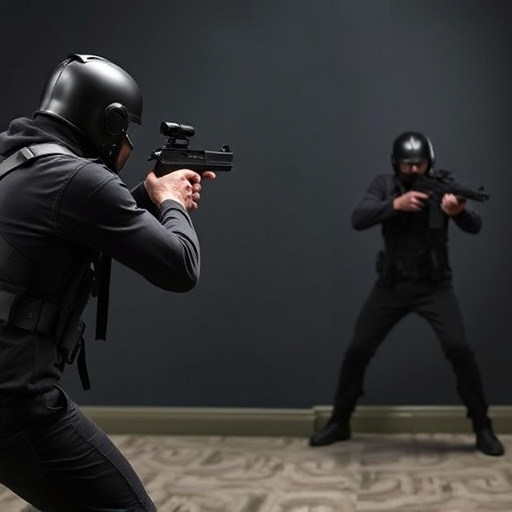Self-defense stun guns for college students utilize high-voltage, low-amperage electric pulses to temporarily disable targets via muscle and nervous system disruption. Effective operation requires understanding voltage, resistance, legal considerations, and proper training & practice to balance personal safety with responsible usage.
In today’s digital age, self-defense stun guns for college students have emerged as valuable tools for personal safety. Understanding how electrical current flow works in these devices is crucial. This article delves into the science behind stun devices, exploring essential components that facilitate electric current and the critical interplay of voltage and resistance. We also discuss vital safety considerations to ensure responsible usage by students, promoting both effectiveness and precautions when carrying self-defense stun guns on campus.
- Understanding Electric Current in Stun Devices
- Components That Facilitate Current Flow
- The Role of Voltage and Resistance
- Safety Considerations for College Students Using Stun Guns
Understanding Electric Current in Stun Devices
Understanding electric current is key to comprehending how self-defense stun guns for college students work. In simple terms, a stun device uses an electrical current to disrupt the normal functioning of a person’s muscles and nervous system, rendering them temporarily incapacitated. This is achieved through the rapid flow of electricity, which can be delivered in various forms, such as direct or alternating current.
When activated, the stun gun generates a high-voltage, low-amperage pulse that travels through the conductor (usually metal prongs or probes) and into the target’s body. This electric current interferes with the electrical signals transmitted by the nervous system, causing muscles to contract uncontrollably and leading to loss of balance and coordination. The effect is temporary but powerful enough to provide crucial seconds for escape in self-defense situations.
Components That Facilitate Current Flow
The electrical current flow in self-defense stun devices, often carried by college students for personal safety, is facilitated by several key components. First, the battery serves as the power source, providing the necessary voltage to initiate and maintain the flow of electricity. This energy is then channeled through a circuit board that regulates the current, ensuring it reaches the correct level for effective immobilization without causing severe harm.
The stun gun’s probe or electrodes play a crucial role in completing the electrical circuit when activated. These metallic elements are designed to conduct electricity efficiently, allowing the current to pass through and deliver a powerful shock to the target. The precise arrangement of these components ensures that the current flows directly from the battery, through the circuitry, and out to the electrodes, making self-defense stun guns for college students reliable tools in potentially dangerous situations.
The Role of Voltage and Resistance
The effectiveness of a self-defense stun device, such as a stun gun, depends heavily on two key factors: voltage and resistance. Voltage represents the force behind the electrical current, determining its strength and the potential impact on the target. Higher voltage can lead to more powerful shocks, but it also necessitates that the device be able to overcome the resistance encountered within the body of the aggressor.
Resistance acts as a barrier against the flow of electricity, so in the context of self-defense stun guns for college students, understanding resistance is crucial. The human body’s natural resistance varies based on factors like muscle mass and hydration levels. A stun device must deliver enough voltage to surpass this resistance and deliver a strong enough shock to incapacitate temporarily, providing time for escape or help. Balancing these variables ensures that the stun gun is both effective as a self-defense tool and safe for the user.
Safety Considerations for College Students Using Stun Guns
Using self-defense stun guns, particularly among college students, raises significant safety considerations. These devices, while designed to incapacitate an assailant temporarily, carry inherent risks if mishandled or used inappropriately. Students should first familiarize themselves with local laws and regulations regarding stun gun ownership and usage, ensuring they comply with all legal requirements before acquiring one.
Moreover, proper training is paramount. College students should seek instruction on safe handling, activation, and deployment techniques from certified trainers to minimize the chance of accidental injuries or excessive use of force. Regular practice sessions can help users develop muscle memory for activating the stun gun during stressful situations, enhancing their ability to defend themselves effectively while minimizing collateral damage.
Stun devices, or self-defense stun guns for college students, operate through a fascinating interplay of electric current, voltage, and resistance. Understanding how these components work together is crucial for navigating their safe use. By grasping the fundamentals of electric current flow, users can ensure they employ these tools effectively while minimizing potential risks. Remember that, in the hands of well-informed individuals, stun guns can serve as powerful tools for personal safety, enabling folks to defend themselves confidently.
